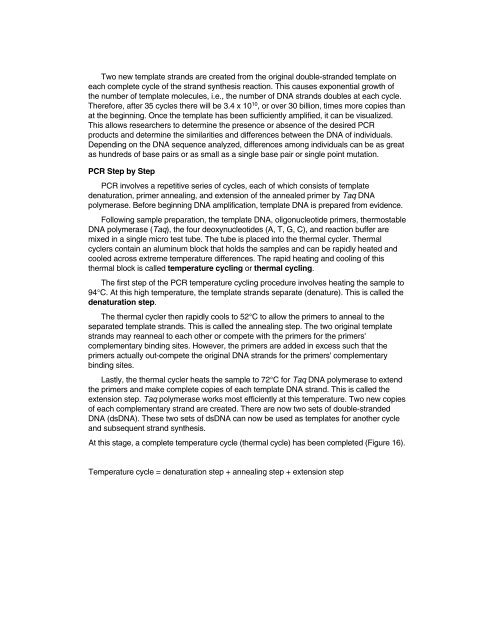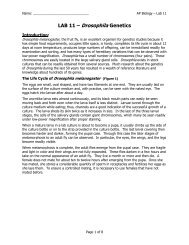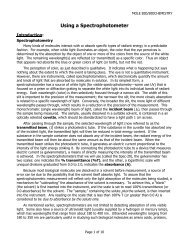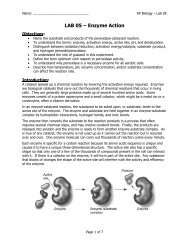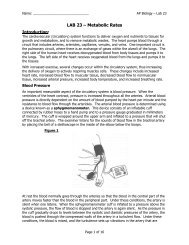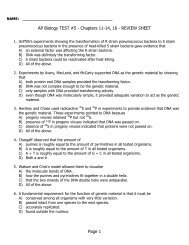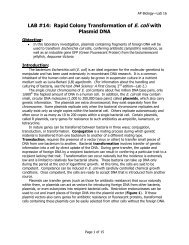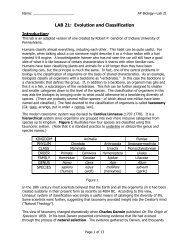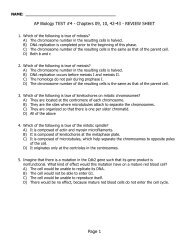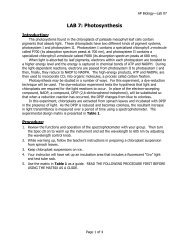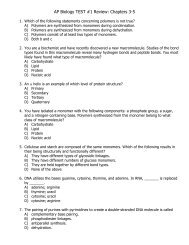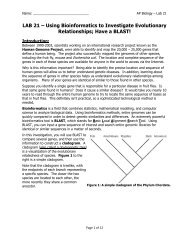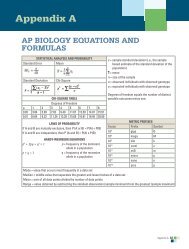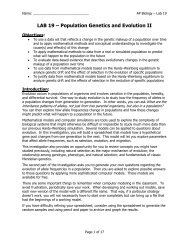Crime Scene Investigator PCR Basics⢠Kit
Crime Scene Investigator PCR Basics⢠Kit
Crime Scene Investigator PCR Basics⢠Kit
Create successful ePaper yourself
Turn your PDF publications into a flip-book with our unique Google optimized e-Paper software.
Two new template strands are created from the original double-stranded template on<br />
each complete cycle of the strand synthesis reaction. This causes exponential growth of<br />
the number of template molecules, i.e., the number of DNA strands doubles at each cycle.<br />
Therefore, after 35 cycles there will be 3.4 x 10 10 , or over 30 billion, times more copies than<br />
at the beginning. Once the template has been sufficiently amplified, it can be visualized.<br />
This allows researchers to determine the presence or absence of the desired <strong>PCR</strong><br />
products and determine the similarities and differences between the DNA of individuals.<br />
Depending on the DNA sequence analyzed, differences among individuals can be as great<br />
as hundreds of base pairs or as small as a single base pair or single point mutation.<br />
<strong>PCR</strong> Step by Step<br />
<strong>PCR</strong> involves a repetitive series of cycles, each of which consists of template<br />
denaturation, primer annealing, and extension of the annealed primer by Taq DNA<br />
polymerase. Before beginning DNA amplification, template DNA is prepared from evidence.<br />
Following sample preparation, the template DNA, oligonucleotide primers, thermostable<br />
DNA polymerase (Taq), the four deoxynucleotides (A, T, G, C), and reaction buffer are<br />
mixed in a single micro test tube. The tube is placed into the thermal cycler. Thermal<br />
cyclers contain an aluminum block that holds the samples and can be rapidly heated and<br />
cooled across extreme temperature differences. The rapid heating and cooling of this<br />
thermal block is called temperature cycling or thermal cycling.<br />
The first step of the <strong>PCR</strong> temperature cycling procedure involves heating the sample to<br />
94°C. At this high temperature, the template strands separate (denature). This is called the<br />
denaturation step.<br />
The thermal cycler then rapidly cools to 52°C to allow the primers to anneal to the<br />
separated template strands. This is called the annealing step. The two original template<br />
strands may reanneal to each other or compete with the primers for the primers'<br />
complementary binding sites. However, the primers are added in excess such that the<br />
primers actually out-compete the original DNA strands for the primers' complementary<br />
binding sites.<br />
Lastly, the thermal cycler heats the sample to 72°C for Taq DNA polymerase to extend<br />
the primers and make complete copies of each template DNA strand. This is called the<br />
extension step. Taq polymerase works most efficiently at this temperature. Two new copies<br />
of each complementary strand are created. There are now two sets of double-stranded<br />
DNA (dsDNA). These two sets of dsDNA can now be used as templates for another cycle<br />
and subsequent strand synthesis.<br />
At this stage, a complete temperature cycle (thermal cycle) has been completed (Figure 16).<br />
Temperature cycle = denaturation step + annealing step + extension step<br />
53


